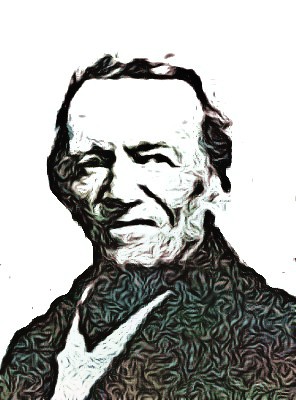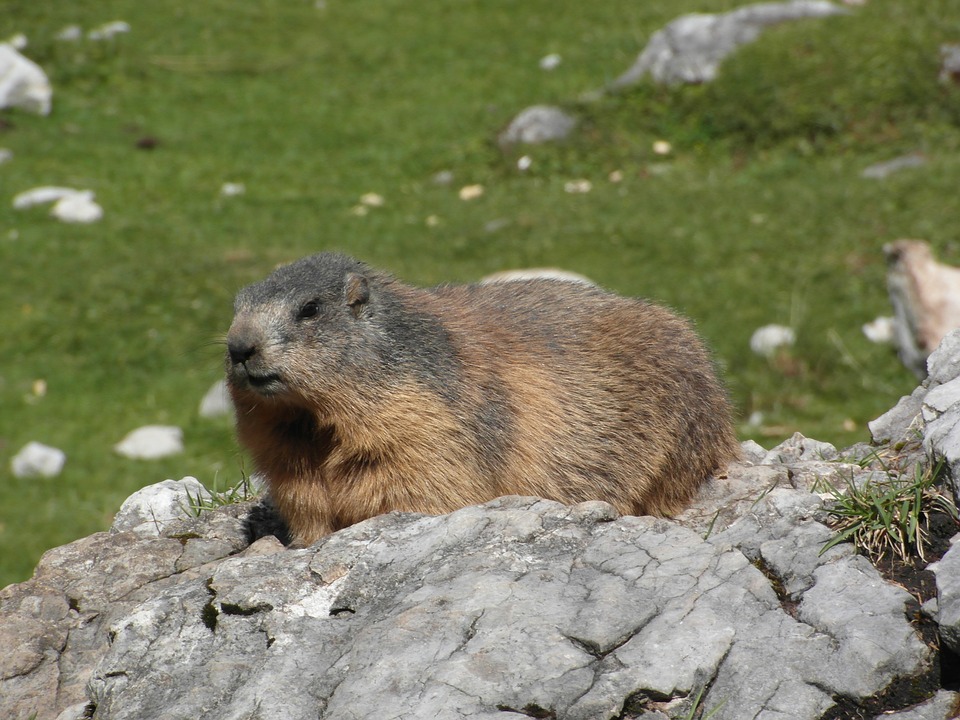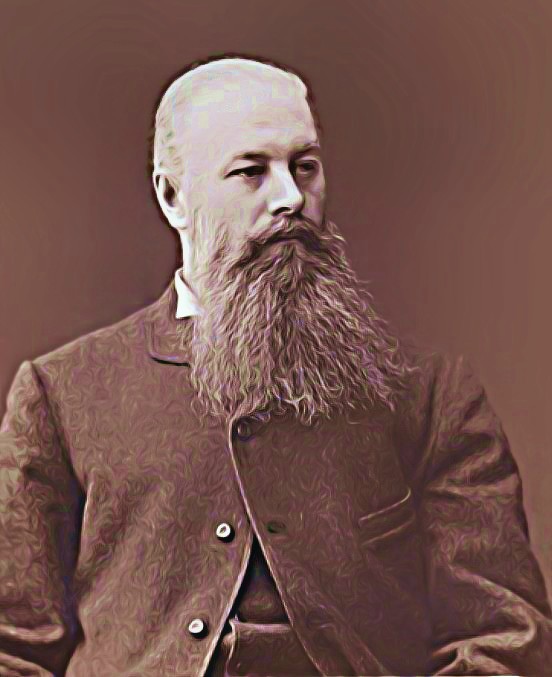There is hardly a subject in all nature, of which the majority of people has so unclear terms and which has hitherto been so completely misunderstood, as the soil on which they walk.
F.A. Fallou
Soil is often considered as the skin of the Earth and is located at the interface between the lithosphere, hydrosphere, atmosphere and biosphere. Air, water, rock and living beings interact to form soil, which, in turn, is the physical and nutritional support for living organisms in emerged areas. Currently, we define soil is an open system that temporarily stores the necessary resources for living organisms. The availability of these resources (water, energy, mineral nutrients, etc.) depends on the intensity and speed of exchange processes between soil and the rest of compartments of ecological systems.
But the concept of soil has been modified in accordance to the increasing understanding of its components and the relations among them. During centuries, soil was considered not more than dirt on rocks, when not simply one of the strata in geological profiles. See, for example, the following statement: “That all the earthy part of soil consists of minute fragments of rock does not require argument, or need proof, but inspection merely to determine it. We have only to place specimens under the magnifier and their rocky origin will become manifest” (Eaton and Beck, 1820).
Or this one (note the small changes after 108 years): “The soil is the uppermost weathered layer of the solid crust of the earth; it consists of rocks that have been reduced to small fragments and have been more or less changed chemically, together with the remains of plants and animals that live on it and in it” (Ramann, 1928).
The German-American scientist Eugene Woldemar Hilgard (geologist, chemist and also with experience in agricultural engineering) identified the role played by soil as source of nutrients and physical support for plants, but did not found clear differences between soil and rocks. I have extracted the first lines of his introduction to one of his main texts of Soil Science: “In the most general meaning of the term, a soil is the more or less loose and friable material in which, by means of their roots, plants may or do find a foothold and nourishment, as well as other conditions of growth. Soils form the uppermost layer of the earth’s crust; but the term does not indicate any such definite average texture as is sometimes implied by its popular use to designate certain loose, loamy materials found in older geological formations. We do find in these, not unfrequently, layers that in the past have served to support vegetation, as evidenced by remains of plants found therein. But as a rule, such ancient soils are much compacted and otherwise changed, and would not now be capable of performing the office of plant nutrition without previous, long-continued exposure to the same agencies by which all soils were originally formed from pre-existing rocks. Within the latter category must be included, in scientific parlance, not only the hard rocks known as such in daily life, but also such soft materials as clay, sand, marls, etc., which often compose, partially or wholly, the bodies of wide-spread geological formations” (Hilgard, 1906).

Eugene W. Hilgard: “my beard itches”.
Other authors also suggested more innovative points of view. In the modern era, Friedrich Albert Fallou is considered the first scientist who described Soil Science as an independent subject (and for some, the father of Soil Science). In the preface of his pioneering book (Fallou, 1862), he wrote: “The current books on soil science are just compilation of mixed materials (an aggregate of unorganized materials) from geology, geography, agricultural chemistry and plant physiology”.

Friedrich Albert Fallou after being blocked by Vasily Dokuchaev in Facebook.
Despite this innovative point of view, Fallou’s concept of soil was still uncomplete, as he described soil as a simple collection of rock fragments: “Soil is considered to be the product of weathering, formed as the tooth of time incessantly grinds the solid covering of our planet and decomposes and destroys its solid mass” (Fallou, 1862).

The day begins and the groundhog has a new rock to turn into soil.
This is not very far from Hilgard’s concept (Hilgard, 1906), who proposed a short list of soil components: “first, rock powder (‘sand’), more or less changed by weathering; second, clay, as one of the chief results of the weathering process of silicate minerals; and thirdly, humus, the dark-colored remnant of vegetable decay”. These statements were rather innovative, but just primitive approaches to the ideas of soil and pedogenesis. Surprisingly, the concept of soil as a mixture of dirt and “things” is still in the mind of many scientists.
The complete transformation of a material from something that was simply the leftover detritus of rocks to something that is itself a body, complete with organs, something that grows and develops and is capable of being young or elderly, is a kind of alchemical transformation in the empirical understanding of soils that undoubtedly merits a historical marker (Denizem, 2013).
During the second half of the 19th century, the Russian geographer Vasily Vasili’evich Dokucháyev (who disputes the position of “father of Soil Science” with Fallou) revised the geographical concept of soil, away from geologists and engineers, and described it as a complex natural system, completely different to a geological stratum, and intimately linked to the interaction of five soil-forming factors (climate, organisms, parent material, relief and time), that work as variables in a function:
Soil = f (parent material, climate, relief, organisms) time
with “time” out of equation because it is not mass nor energy. Dokucháyev described how soil processes finally produce a layer-organized body, completely different from parent material. Soil is not a fragmented rock, soil is… a thing! A new science was born! Although Dokucháyev is generally credited as the first scientist who proposed the concept of soil as a system with its own parts and processes and the theory of the five soil forming factors, I have not been able to find the original source. Dokucháyev’s theory, however, is cited and well described by Jenny (1980) and, more recently, in a brief paper by Scalenghe and Certini (2007), among many other authors.

Vasily Dokucháyev, waiting for dinner.
In the decade of 1940, the Swiss pedologist Hans Jenny redefined the soil-forming factors as independent variables that define the soil system, and added an ellipsis for additional unknown or particular factors (Jenny, 1941):
Soil = f (parent material, climate, relief, organisms, time, …)
About the soil-forming factors, he wrote: “the notions of ‘forming’ or ‘acting’ that connote casual relationships have been replaced by the less ambiuous conceptions of ‘defining’ or ‘describing’. We realize, of course, htat for everyday usage it may be convenient to think of some of the soil-forming factors as ‘creators’. However, as soon as one undertakes to examine all factors more critically, the casuality viewpoint leads into so many logical entanglements that it appears preferably to drop it altogether and adopt the descriptive attitude outlined above” (Jenny, 1941).
In addition, Jenny (1941) suggested that the soil may be defined as an open physical system, where substances can be added or removed, as “there is no sharp boundary between undercomposed rock, weathered rock, soil material and soil”. More: “the distinction between soil and environment is arbitrary; it exists only in our minds, not in nature”. This simple line broke the Dokucháyev’s geographical vision of soil as an independent natural body.
References
- Denizem S. 2013. Three holes: in the geological present. In: Turpin E (Ed.), Architecture in the Anthropocene. Encounters among design, deep time, science and philosophy. Open Humanities Press. Michigan Publishing, University of Michigan Library. Ann Arbor, MI. DOI: 10.3998/ohp.12527215.0001.001.
- Eaton A, Beck, TR. 1820. A geological survey of the County of Albany. Agricultural Society of Albany County. Albany, NY.
- Fallou FA. 1862. Pedologie oder Allgemeine und besondere Bodenkunde. G. Schönfeld´s Buchhandlung Dresden. Schöenfeld.
- Hilgard EW. 1906. Soils: Their formation, properties, composition, and relations to climate and plant growth in the humid and arid regions. Macmillan. New York, NY. DOI: 10.5962/bhl.title.24461.
- Jenny H. 1941. Factors of soil formation: a system of quantitative pedology. Dover Publications. New York, NY.
- Jenny H. 1980. The soil resource: origin and behaviour. Ecological Studies, Vol. 37. Springer-Verlag. New York, NY. DOI: 10.1007/978-1-4612-6112-4.
- Ramann E. 1928. The evolution and classification of soils. Translated by C.L. Whittles. W. Heffer & Sons. London.
- Scalenghe R, Certini G. 2007. Soil forming factors. In: McGinley M. (Ed.), The Encyclopedia of Earth, Article 156086.


